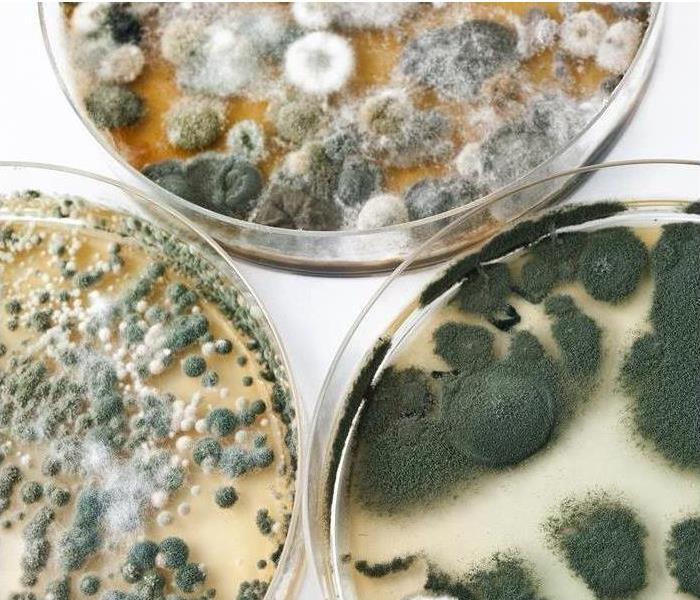Mold Remediation
12/10/2021 (Permalink)
Mold will grow where there is moisture, such as around leaks in roofs, windows, or pipes, or where there has been a flood. Mold grows on paper, cardboard, ceiling tiles, and wood. Mold can also grow in dust, paints, wallpaper, insulation, drywall, carpet, fabric, and upholstery.
There is always some mold around. Molds have been on the Earth for millions of years. Mold can get in your home through open doors, windows, vents, and heating and air conditioning systems. Mold in the air outside can be brought indoors on clothing, shoes, bags, and even pets.
How common is mold in buildings?
- Molds are very common in buildings and homes. Mold will grow in places with a lot of moisture, such as around leaks in roofs, windows, or pipes, or where there has been flooding. Mold grows well on paper products, cardboard, ceiling tiles, and wood products. Mold can also grow in dust, paints, wallpaper, insulation, drywall, carpet, fabric, and upholstery.
- The most common indoor molds are Cladosporium, Penicillium, and Aspergillus. We do not have precise information about how often different molds are found in buildings and homes.
TO PREVENT MOLD FROM HAPPENING:
- Keep the house dry -- don't let water build up anywhere, ventilate damp rooms, wipe shower walls and doors after use.
- Don't leave wet clothes in the washing machine where mold can quickly grow.
- Wash shower curtains and bathroom tiles regularly with mold-killing products.
- Don't have too many indoor plants -- especially in the bedroom -- as mold can grow in plant soil.
- Fix any leaks or seepage in the house, indoors and out.
- Put plastic over dirt in crawlspaces and keep them well ventilated.
- Use exhaust fans in the kitchen and bathrooms.
- Turn off humidifiers if you see condensation on windows.
- Use dehumidifiers and air conditioners in basements and other areas of the house where mold tends to grow, especially in hot humid climates.
- Clean dehumidifiers and humidifiers every week.
- On concrete floors, remove carpet and use area rugs that can be lifted and washed, or install a vapor barrier over the concrete.
STEPS ON TREATING MOLD:
- Step 1: Emergency Contact
- Step 2: Inspection and Mold Damage Assessment
- Step 3: Mold Containment
- Step 4: Air Filtration
- Step 5: Removing Mold and Mold-Infested Materials
- Step 6: Cleaning Contents and Belongings
- Step 7: Restoration
SERVPRO OF COLTON/LOMA LINDA/GRAND TERRACE IS ALWAYS READY TO HELP!
JUST CALL: 909-514-1900
We provide 24/7 Emergency Service
Time is important when dealing with mold, and a quick response will help lessen damage, help avoid costly repairs and help result in less disruption to your family.
#1 in the Cleanup and Restoration Industry*
We’ve earned the reputation as a trusted leader in the restoration industry and specialize in mold inspection and testing, mold cleanup, mold restoration and more.






 24/7 Emergency Service
24/7 Emergency Service
